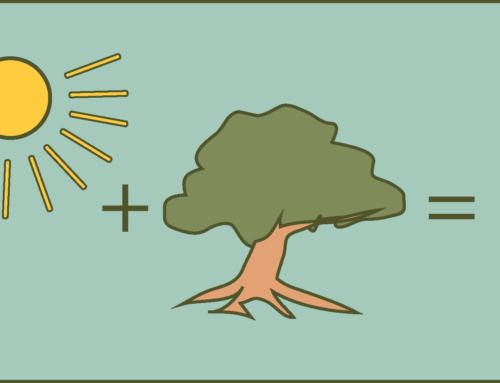When Mabalo Lokela, a 44-year-old teacher from Yalikonde woke up with a fever one morning in 1976 while on vacation in northern Zaires, now the Democratic Republic of the Congo, he suspected that he had caught one of the common infections that affected this part of Africa was not atypical:
Probably malaria or yellow fever, at worst dengue. Not harmless in any case, but no need to panic. These illnesses were mostly manageable with medication and equipped with a healthy immune system, he would soon feel better again.
Little did he know that his illness would only be the beginning of a catastrophic epidemic in the heart of the African continent, which ended in over 400 deaths and which caught the attention of the whole world. A virus, more deadly than anything previously known, had broken out.
After a few days, Mambalo Lokela's fever rose to over 40 degrees Celsius, he was shaken by violent cramps, in addition to diarrhea, vomiting and neuralgic pain, bleeding from internal organs was added after a few days. His body began to disintegrate and was covered with bruises all over.
The Belgian nurses at the missionary clinic were at a loss. Within a few days and weeks, the perplexity gave way to despair and sheer horror. More and more people around the infirmary showed the symptoms described and died a terrible, agonizing death.
Only a few weeks later the most likely cause of the illnesses could be clarified. A previously unknown virus had infected the affected people; its appearance under the electron microscope resembled that of the Marburg virus, which was discovered just a few years ago, which was also fatal, but in quite a different context, namely in the manufacture of a vaccine, the lives of quite a few people had cost.
The dangerous pathogen Ebola virus was named after the small river on the banks of which the Belgian medical center was located in Yambuku.
What are filoviruses?
Ebola viruses are representatives of a family of viruses called Filoviridae , which is characterized by particularly long, threadlike (Latin filum = thread) structures. The so-called nucleocapsid, ie the viral nucleus made of nucleic acids and coat proteins, is still surrounded by a lipid bilayer interspersed with proteins.
Under the electron microscope, the filoviruses can be clearly distinguished from other viruses based on their special shape, which sometimes reminds of a darning needle or a question mark due to its loop-like end. Like all viruses, they rely on cells to reproduce.
Ebola virus can reproduce in various animal and human cells, leave the cell in a process called "budding" and infect other cells. The cells are usually destroyed.
Other viruses also destroy cells. So why is Ebola so dangerous? There are mutliple reasons for this. When viruses that are transmitted from an animal to humans (so-called zoonoses ) multiply, they are anything but optimally adapted to the host: it is that their multiplication often leads to the death of the host Expression of this incomplete adaptation, because a virus can only be successful in the long term if it can infect many other hosts. An early death of the infected is therefore not a sensible survival strategy for viruses. It is therefore often observed that viral infections in which viruses have been transmitted from animal to human either end in a cul-de-sac or the viruses adapt to the new host in such a way that a better balance is found between virus replication and the aggressiveness of the disease.
For viruses it is not decisive whether the host gets sick, but the disease as a result of the metabolism being put under viral control must not be so deadly that the host dies before he can pass the virus on to others.
This balance has not yet been reached with Ebola viruses. It is always new infections from the animal kingdom that lead to mostly catastrophic, but usually quickly contained epidemics among humans.
Why does Ebola break out?
In a way, Ebola outbreaks are still mysterious. This is certainly due to the fact that they mostly take place in regions of Africa that are sparsely populated and located near primeval forests.
In a very short time, a large number of people fall seriously ill in these regions, which are often infrastructurally weak and poorly equipped medically. A huge number of deaths (up to 70-80% of all sick people die) illustrate the devastating effect that an Ebola virus infection has on the organism.
By 2014, the outbreaks in Sudan or Zaire, for example, could be contained quickly with comparatively simple hygienic measures, so that there was little to worry about until now that Ebola could threaten a society with intact hygienic standards.
In the case of the current outbreak in 2014, however, there are aspects that resulted in significantly higher casualties than previously thought possible. More on that below.
What exactly happens when cells, especially human cells, are infected by Ebola viruses?
The viruses can apparently infect a large number of cell types, e.g. Cells of the liver or immune system. In this respect, Ebola virus is also an immunodeficiency virus, but one that is not slow, e.g. HIV but kills quickly.
After the newly created virus particles are released, the cells are usually destroyed. However, this process is also typical for other viruses and explains e.g. not hemorrhagic fever, which is characterized by internal bleeding.
People who die from Ebola do not develop antibodies. Are they genetically different from people who survive the disease, or is their immune system paralyzed by the virus faster than others? Are you unlucky enough that your blood does not contain any white blood cells that could stem the virus?
Survivors have detectable antibody titers against the virus in the 2nd symptomatic week. It might be a sensible strategy that people who are immune to the virus can help care for the sick and fight the disease.
It is also interesting in this context that a large proportion of the population in areas of Central Africa where Ebola virus outbreaks are known has antibodies against Ebola, but never developed Ebola virus fever. What does that mean? Infections may occur much more often where people do not become seriously ill but can keep the virus at bay, e.g. because they have a favorable genetic background.
Where do the filoviruses come from? Are filoviruses harmless in animals?
Humans are not a natural host of filoviruses, which means that in order not to become extinct, the viruses have to multiply in other organisms. For a long time it remained puzzling where exactly the filoviruses jump onto humans. It was obvious that certain species of monkeys, e.g. Chimpanzees are carriers, but even if there were indications of such transmissions, it also became clear that the apes are at best intermediate hosts, because among them the mortality rate is often similar to that of humans.
It is assumed that monkeys themselves have to be infected by other animals.
Here, bats and, in the past few years, fruit bats have also been targeted by the researchers. It is now clear that bats are very likely responsible for the survival of the host reservoir of many filoviruses.
At the same time, the complete virus is usually not found in the animals, but only traces of its presence, e.g. Fragments of nucleic acids or antibodies against its coat proteins. In addition, experimentally, it is extremely difficult to infect bats with the filoviruses. If this succeeds in fruit bats, the animals will not get sick.
719/5000 Both indicate that the virus is controlled by the host's organism on the one hand, and on the other hand that the probability of a single transmission to other animals or even humans is very low. However, since bats or fruit bats can often occur in dense flocks of up to one million animals, such an event is once again considered as a whole. It is also suspected that there are phases in which the virus replicates rapidly in the bat populations, but also disappears comparatively quickly, so that when filovirus outbreaks are discovered in humans, only the traces mentioned are found in the hosts.
The 2014 outbreak in West Africa
The current Ebola eruption is the first in West Africa and the first to affect urban areas. More people were infected and died than in all previously known outbreaks combined. The economic and social consequences for all affected countries are far-reaching and long-term.
How did the epidemic come about?
The virus that triggered the epidemic is an old acquaintance: it is called Ebola-Z, a subset of the Ebola viruses that were first isolated at the 1976 outbreak in Zaire.
Biologically, the virus does not differ significantly from the already known Ebola viruses and so the causes of the enormous number of infections are more likely to be sought at the anthropological-sociological level.
It is certainly striking that the conditions for possible contacts between the people of West Africa and the dangerous pathogens have changed massively in recent decades. In this region, many countries are among the poorest in the world. Overexploitation of nature through deforestation has paradoxically increased the likelihood of encounters between humans and wildlife.
So far, Ebola has not reached the cities. That has changed since the outbreak in 2014: in the middle of 2014, people in the densely populated cities of Guinea and Liberia were infected, a worst-case scenario, the end of which cannot be foreseen even after the partially successful containment.
The reproductive rate R 0 of the virus in the beginning of the outbreak was around 2.7 according to various data, which means that a patient infects another 2-3 people, a rate that can cause fear because she corresponds to that of viruses with a high pandemic potential, for example influenza viruses.
Ebola viruses can be combated through hygienic measures and correct behavior. Traditional rituals, superstitions, but also well-meaning help in the care of the sick can make these measures ineffective and lead to the collapse of a country's already poorly trained health system.
According to the latest data, it seems very likely that the current outbreak is due to exactly one zoonotic event, from a wild population that is also responsible for the two outbreaks that occurred before.
It also makes it likely that the virus has spread from central Africa to West Africa across animal populations without infecting humans.
The first infected person from the current outbreak is a 2-year-old child from Guinea who died of Ebola virus fever in December 2013.
There is a risk that the virus mutation rate during replication is higher in the human host than in the natural host, making dangerous adaptations more likely.
On the basis of the genetic data, it cannot be entirely ruled out that the size of the current outbreak is also due to the specific genotype of the virus strain and not only to anthropological-sociological causes.
A particular tragedy is that 5 of the approximately 70 authors, mostly doctors, who collected many of these sequence data lost their lives in the fight against Ebola. Inadequately protected contact with body fluids, care for the sick with only simple means have obviously taken their toll here.
Other statistical data indicate that a clear catalog of measures must be followed if the virus is to be contained. The funeral rituals in particular are the so-called superspreader the aim of these measures.
The future: health policy: prevention, diagnostics, therapy, vaccination
We do not yet know whether the size of the Ebola outbreak in West Africa is the announcement of a fundamentally new threat to humanity: a virus that is better adapted to human civilization, that leaves the jungle more easily and spreads faster from person to person. However, the 2014 outbreak may not be fundamentally different from other, more localized outbreaks based on the biological properties of the virus. Merely the fact that the virus reached urban regions for infrastructural reasons and certain burial rites countered the rapid containment could have brought humanity to the brink of a global catastrophe and could be a sufficient explanation for the unusually large epidemic.
In any case, the outbreak is a warning and calls for internationally united efforts to prevent Ebola epidemics by early and reliable diagnostics, comprehensive vaccinations and the development of effective medicines.
The chances are good, because research on filoviruses has been rather poorly funded due to the small number of cases so far (apart from military projects), there is currently a chance, with the combined efforts of universities, industry and international health policy, to understand the virus and to combat it again significantly improve outbreak.
The story of Mabalo Lokela is in line with the countless people who have been killed by viruses, these submicroscopic particles on the border between animate and inanimate matter, in the course of human development, most of them unknown and hardly as spectacular.
The understanding of these often extremely dangerous but no less interesting pathogens has grown exponentially in the last hundred years. In the case of Ebola viruses, this understanding can lead to preventing the worst.




